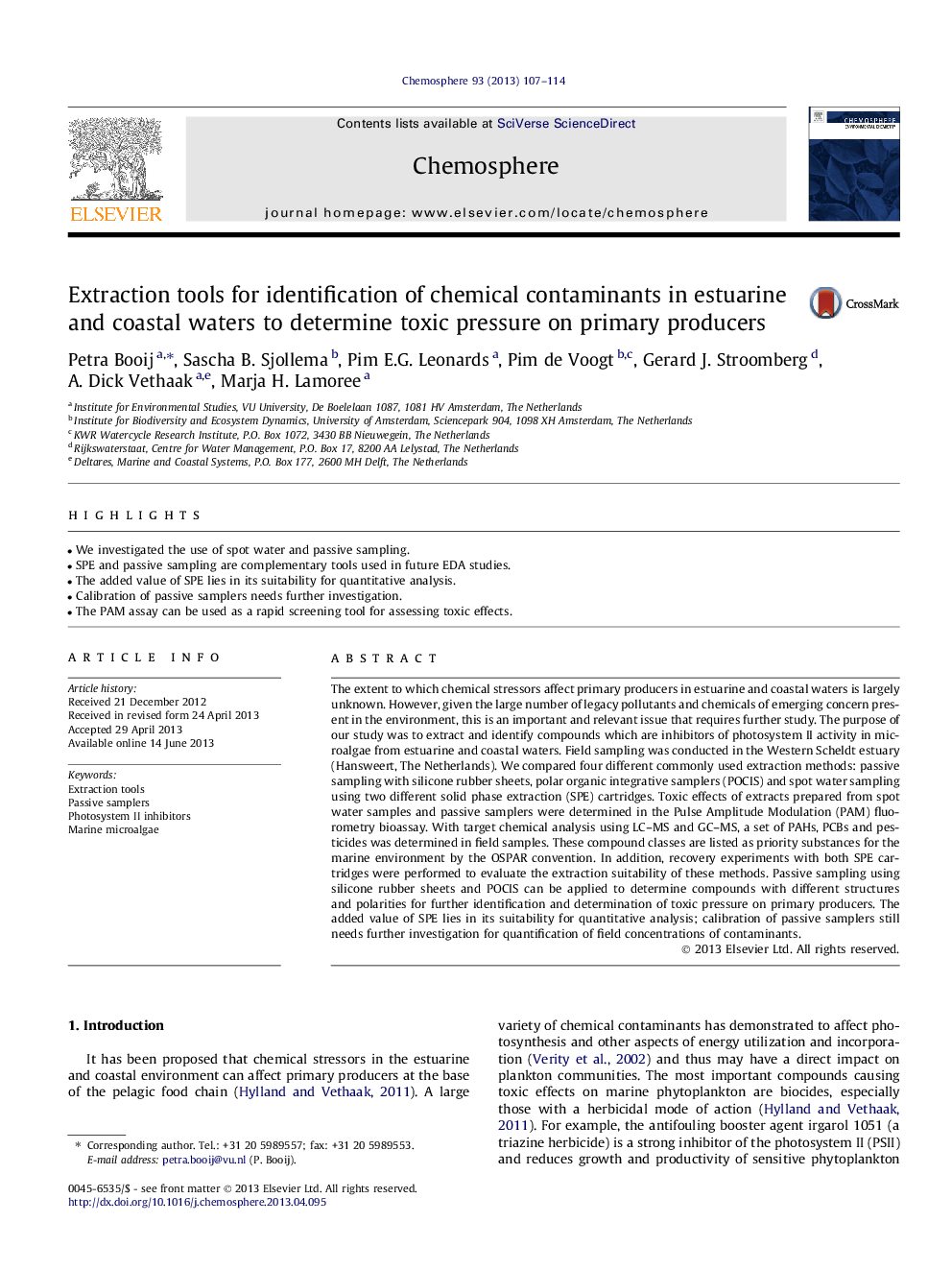| Article ID | Journal | Published Year | Pages | File Type |
|---|---|---|---|---|
| 4409018 | Chemosphere | 2013 | 8 Pages |
•We investigated the use of spot water and passive sampling.•SPE and passive sampling are complementary tools used in future EDA studies.•The added value of SPE lies in its suitability for quantitative analysis.•Calibration of passive samplers needs further investigation.•The PAM assay can be used as a rapid screening tool for assessing toxic effects.
The extent to which chemical stressors affect primary producers in estuarine and coastal waters is largely unknown. However, given the large number of legacy pollutants and chemicals of emerging concern present in the environment, this is an important and relevant issue that requires further study. The purpose of our study was to extract and identify compounds which are inhibitors of photosystem II activity in microalgae from estuarine and coastal waters. Field sampling was conducted in the Western Scheldt estuary (Hansweert, The Netherlands). We compared four different commonly used extraction methods: passive sampling with silicone rubber sheets, polar organic integrative samplers (POCIS) and spot water sampling using two different solid phase extraction (SPE) cartridges. Toxic effects of extracts prepared from spot water samples and passive samplers were determined in the Pulse Amplitude Modulation (PAM) fluorometry bioassay. With target chemical analysis using LC–MS and GC–MS, a set of PAHs, PCBs and pesticides was determined in field samples. These compound classes are listed as priority substances for the marine environment by the OSPAR convention. In addition, recovery experiments with both SPE cartridges were performed to evaluate the extraction suitability of these methods. Passive sampling using silicone rubber sheets and POCIS can be applied to determine compounds with different structures and polarities for further identification and determination of toxic pressure on primary producers. The added value of SPE lies in its suitability for quantitative analysis; calibration of passive samplers still needs further investigation for quantification of field concentrations of contaminants.
